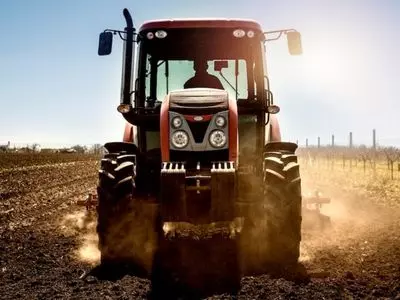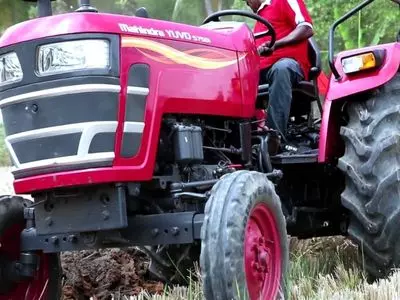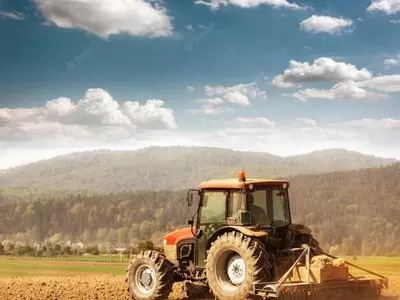No products in the cart.
Tractor
How Much Does a MAHINDRA 2538 Weigh?
If you’re in the market for a new Mahindra tractor, you may wonder how much the Mahindra 2538 weighs. In this blog post, we’ll provide you with all the information you need to know about the weight of the Mahindra 2538. Keep reading to learn more!
*This post may have affiliate links, which means I may receive commissions if you choose to purchase through links I provide (at no extra cost to you). As an Amazon Associate I earn from qualifying purchases. Please read my disclaimer for additional details.
How Much Does a Mahindra 2538 Weigh?
The Mahindra 2538 is a heavy-duty tractor built to withstand the rigors of farm life. It boasts a powerful engine and a strong frame, making it one of the most popular tractors on the market. But how much does this brutal machine weigh? The answer may surprise you. The Mahindra 2538 weighs a whopping 3,130 pounds. That’s nearly 1.5 tons! And that’s without any attachments or equipment. Here’s a video showing a bit more about the Mahindra 2538 tractor:How Does the Weight Compare to Other Tractors?
The Mahindra 2538 is a compact utility tractor that falls into the 35-horsepower range. It’s a 2WD or 4WD, has a hydrostatic transmission, and comes with either R1 or R3 tires. To give some perspective on how this compares to other models, let’s look at two popular compact utility tractors in the same class: the John Deere 3025E and the Kubota L3301. The John Deere 3025E has a bit more horsepower at 38, but it only comes in 2WD. It does have the option for R1 or R3 tires and comes with a hydrostatic transmission like the Mahindra tractor. The John Deere model weighs in at 2603 lb. The Kubota L3301 also has 38 horsepower, but its power steering comes standard and has an HST transmission. You can get this model with either turf or agricultural tires. It weighs 2557 to 2778 pounds without any additional implements attached. When comparing Kubota vs Mahindra and John Deere, you can tell that Mahindra is definitely the heaviest.How Can the Weight of the Mahindra 2538 Affect its Performance?

Lightweight Tractors vs Heavyweight Tractors

Benefits of a Lightweight Tractor
Let’s look at some benefits of having a lightweight tractor.- Lightweight tractors are more maneuverable. This means that they can be turned more efficiently, and they can also be moved around the farm more efficiently. This can be a significant advantage for tasks like plowing or tilling.
- Lightweight tractors put less strain on the soil. This means that they cause less compaction and soil disturbance. This can be beneficial for both the farmer and the environment.
- Lightweight tractors are easier on fuel consumption. This is because they don’t require as much power to operate, which can save money in the long run.
- Lightweight tractors tend to be less expensive than their heavier counterparts. This makes them a more budget-friendly option for farmers purchasing a new tractor.
Disadvantages of Lightweight Tractors
- Less stability – A lighter tractor is less stable than a heavier one, meaning it is more likely to tip over.
- Limited lifting capacity – Lighter tractors have less power and cannot lift as much weight as heavier models. This can limit their usefulness on farms and in other agricultural applications.
- Shorter lifespan – Because they are not as well-built as heavier tractors, lighter models tend to have a shorter lifespan and may need to be replaced more often.
Benefits of a Heavyweight Tractor
Heavyweight tractors have several advantages that make them well-suited for specific applications.- First, they are better able to handle heavy loads. This is essential when plowing fields or transporting large amounts of equipment or materials.
- Additionally, heavier tractors are less likely to tip over. This is important when the ground is uneven, or the tractor is at risk of rolling down a hill.
- Also, heavier tractors tend to be more stable on the road. This makes them safer to operate and helps to reduce wear and tear on the tires.
- Finally, heavier tractors typically have more powerful engines, which can be helpful when working in challenging conditions.
Disadvantages of Heavyweight Tractors
- Soil compaction – When a tractor is too heavy for the job, it can cause soil compaction. This means that the ground is firmly packed down, making it difficult for plant roots to penetrate the soil and access nutrients and water.
- Reduced traction – A tractor too heavy for the terrain can have reduced traction, meaning it will slip and slide more on slippery or uneven surfaces.
- Increased fuel consumption – Heavier tractors require more fuel to move them, resulting in higher operating costs.
Factors to Consider

